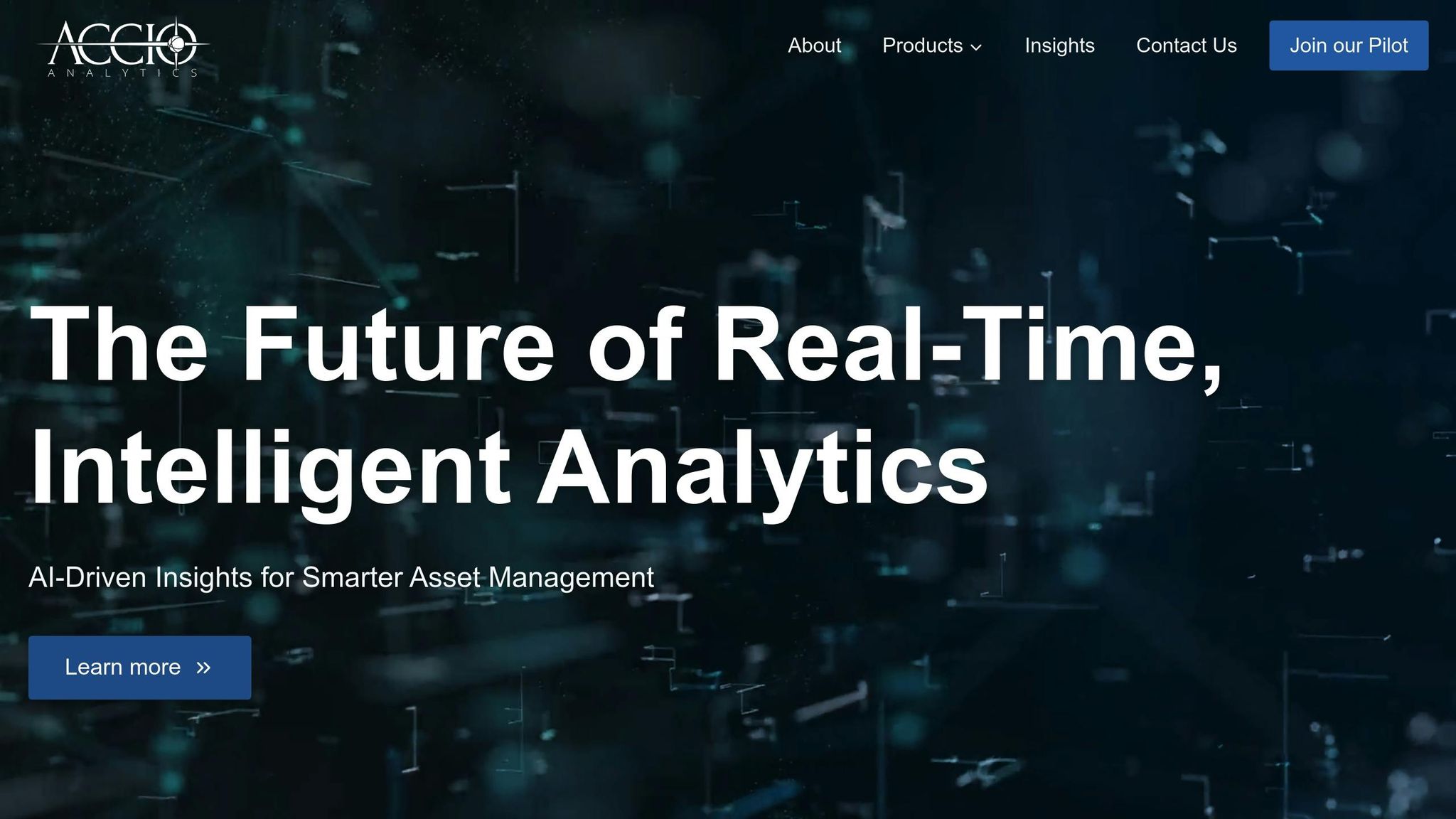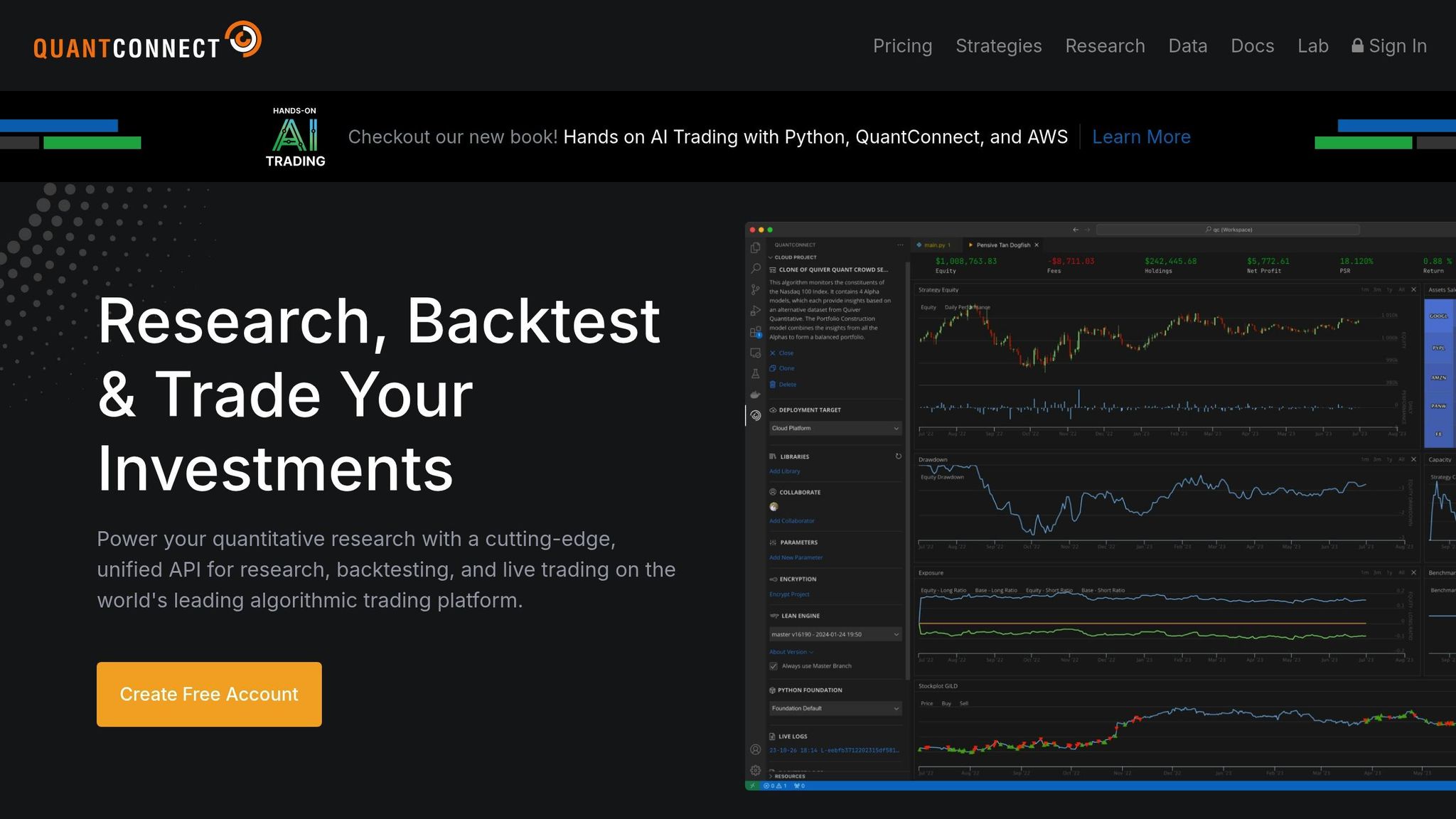Machine Learning vs Traditional Analytics in Portfolio Management
Accio Analytics
8 min read
Machine learning is transforming portfolio management. It processes real-time data, identifies patterns, and dynamically adjusts strategies, while traditional analytics relies on historical data and manual processes. Here’s a quick comparison:
- Asset Selection: Traditional methods use past data and expertise, while ML analyzes live data for emerging trends.
- Risk Management: Traditional models are static; ML adapts to market changes in real time.
- Decision-Making: Human judgment dominates traditional approaches, whereas ML uses data-driven, unbiased algorithms.
- Data Handling: Traditional methods struggle with large datasets; ML excels with both structured and unstructured data.
Quick Comparison
| Aspect | Traditional Analytics | Machine Learning |
|---|---|---|
| Data Processing | Batch analysis of historical data | Real-time, continuous analysis |
| Risk Adaptability | Static models | Predictive and dynamic |
| Decision Basis | Human expertise | Quantitative, algorithm-driven |
| Data Types | Limited to structured data | Handles diverse, unstructured inputs |
Blending these methods often yields the best results: ML provides powerful insights, while human expertise ensures sound decision-making.
Core Differences: ML vs Standard Analytics
Data Processing Methods
Machine learning and traditional analytics take very different approaches to processing data. Traditional analytics typically sticks to analyzing static, historical data in batches. While this method works, it struggles to keep up with real-time market changes or detect new trends as they emerge.
Machine learning flips this approach by using dynamic, ongoing data processing. These systems can analyze multiple data streams at the same time – like market prices, trading volumes, economic indicators, and even social media sentiment. They’re especially good at handling unstructured data and spotting patterns that traditional methods might overlook.
| Processing Aspect | Traditional Analytics | Machine Learning |
|---|---|---|
| Data Volume | Limited by manual processing | Handles large datasets simultaneously |
| Processing Speed | Periodic batch analysis | Real-time, continuous processing |
| Data Types | Structured financial data | Both structured and unstructured data |
| Pattern Recognition | Based on predefined rules | Learns and adapts to identify patterns |
These processing differences play a key role in how decisions are made.
Human vs Machine Decisions
Another major difference lies in how decisions are made. Traditional analytics relies heavily on human expertise. Portfolio managers interpret the data and use their experience to guide decisions. While this can lead to valuable insights, it’s often influenced by cognitive biases.
Machine learning, on the other hand, uses data-driven models that continuously learn from market behavior. These algorithms can analyze multiple variables at once, delivering consistent and objective decisions based entirely on quantitative data.
Risk Analysis Methods
Risk analysis is another area where these two methods diverge. Traditional analytics uses fixed models based on historical data, like past volatility and correlations. While useful, this approach can be rigid and slow to adapt to sudden market changes.
Machine learning takes a more flexible route, using predictive models to track hundreds of risk factors in real time. These systems can anticipate market shifts and adjust portfolio allocations on the fly, offering a more responsive way to manage risk. Instead of sticking to static thresholds, they adapt dynamically to help reduce potential losses.
Performance Analysis
Speed and Precision
Machine learning (ML) systems handle massive amounts of data in real time, enabling quick portfolio adjustments. Manual methods, on the other hand, often face delays due to time-consuming reviews. This speed advantage plays a key role in improving both risk management and data handling, as outlined below.
Risk Control Methods
Traditional analytics rely on historical data, which often fails to keep up with fast-changing markets. ML systems, however, adjust risk management dynamically, offering a more responsive approach.
| Risk Control Feature | Traditional Analytics | Machine Learning |
|---|---|---|
| Response Time | Slower, dependent on manual processes | Fast, with real-time updates |
| Data Scope | Limited to historical metrics | Incorporates live data and a wider range of indicators |
| Model Flexibility | Uses static models | Continuously adjusts to market changes |
This dynamic risk control, paired with ML’s processing speed, is especially useful when dealing with large and complex datasets.
Managing Large Data Sets
Effectively handling the ever-growing volume of data is a major challenge. Traditional methods often struggle with data overload, requiring extensive manual effort. ML systems, on the other hand, process both structured and unstructured data with ease. They analyze a wide variety of inputs, such as market prices, trading volumes, economic trends, social sentiment, news articles, and corporate financials.
These advanced capabilities lead to better-informed and more reliable investment decisions.
How to Use Machine Learning for Portfolio Optimization
sbb-itb-a3bba55
Implementation Examples
Here’s how machine learning (ML) is reshaping portfolio management with practical applications.
Asset Distribution Systems
ML algorithms are now a key part of modern asset allocation strategies. For example, Accio Quantum Core uses its AI agents to automate portfolio optimization across various asset classes. Unlike traditional methods, which rely on periodic manual reviews, ML systems can adjust asset allocations continuously based on live data.
These ML-driven systems analyze multiple market signals in real time, such as market sentiment, economic trends, and company-specific metrics. This allows for dynamic adjustments that align with ongoing market movements.
Market Trend Analysis
Investment firms are using ML to revolutionize how they analyze market trends. By combining predictive analytics with real-time data, these systems offer more advanced forecasting than traditional methods. While conventional approaches depend heavily on historical patterns and technical indicators, ML systems can uncover subtle market relationships that human analysts might miss.
Here’s a quick comparison:
| Analysis Feature | Traditional Analytics | Machine Learning |
|---|---|---|
| Data Processing | Limited to structured financial data | Handles diverse data types and inputs |
| Update Frequency | Periodic updates | Real-time adjustments |
| Pattern Recognition | Relies on predefined indicators | Identifies dynamic patterns across data |
| Prediction Accuracy | Based on historical trends | Continuously adapts to market changes |
These capabilities make ML tools a powerful asset for identifying and responding to market trends.
Portfolio Balance Tools
ML-driven tools are transforming portfolio balancing from a static process into a dynamic, real-time response system. Platforms like QuantConnect offer tools that adjust portfolio weights instantly based on market conditions. These systems use advanced risk models, such as Value at Risk (VaR) and Conditional VaR (CVaR), to deliver a deeper risk assessment compared to traditional methods.
During periods of market volatility, ML tools can rebalance portfolios on the fly, minimizing risk and maximizing potential returns.
"A study evaluating 17 model variants from 8 classes across multiple performance metrics found that ML strategies can generate statistical alpha and outperform classical portfolio theory models in some cases."
Method Selection Guide
Deciding between Machine Learning (ML) and traditional analytics depends on your portfolio’s complexity, data requirements, and risk management protocols.
Main Points Summary
The right approach hinges on your specific needs. ML shines when handling large-scale, real-time data and uncovering patterns that might escape manual analysis. On the other hand, traditional analytics remain a trusted choice for simpler, more straightforward strategies.
| Portfolio Aspect | Choose Traditional Analytics When | Choose Machine Learning When |
|---|---|---|
| Real-Time Needs | Updates are needed weekly or monthly | Continuous monitoring is essential |
| Data Complexity | You work with basic market metrics | You handle multiple data streams and sources |
| Strategy Type | Standard allocation models are sufficient | Advanced multi-factor strategies are used |
| Infrastructure | Basic computing systems are in place | Robust technical resources are available |
| Risk Approach | Core statistical measures meet your needs | Predictive risk modeling is required |
Traditional analytics are well-suited for portfolios with clear objectives and conventional asset classes. ML, by contrast, becomes indispensable for portfolios requiring real-time adjustments, complex data analysis, and dynamic risk management.
These selection criteria reflect a broader trend in the industry: blending advanced analytics with time-tested methods.
Portfolio Management Trends
The industry is increasingly adopting hybrid models that combine ML with traditional approaches. Platforms like Accio Quantum Core and QuantConnect exemplify this shift, offering solutions that merge computational strength with strategic oversight.
As the investment world leans more on data-driven decision-making, ML is playing a growing role in improving trade execution and assessing risks. Experts predict this trend will only grow as investors aim to harness advanced analytics while keeping human expertise central to strategic planning.
When deciding between methods, think about your investment goals, available technical resources, and risk tolerance. Often, the best results come from striking the right balance between technology and practical application.
"A study evaluating 17 model variants from 8 classes across multiple performance metrics found that ML strategies can generate statistical alpha and outperform classical portfolio theory models in some cases."
Tools and Platforms
Specialized platforms are now putting advanced portfolio management techniques into action. Let’s take a closer look at two standout solutions.
Accio Quantum Core

Accio Quantum Core is an AI-driven platform designed for portfolio management. It uses specialized AI agents to handle tasks like stock selection and compliance monitoring. Here’s a breakdown of its core components:
| Feature | Role | Purpose |
|---|---|---|
| Sentinel | Stock selection and optimization | Makes decisions based on data analysis |
| Pilot | Custom portfolio construction | Creates strategies tailored to live markets |
| Patrol | Monitoring and compliance | Automates risk management |
| AI Assistant | Personalized recommendations | Adjusts strategies dynamically |
This platform combines fast, data-focused optimization with thoughtful oversight to create a balanced approach.
QuantConnect

QuantConnect is an all-in-one platform for algorithmic trading, blending traditional techniques with machine learning. Its key features include:
- Advanced Backtesting: Test strategies thoroughly with historical data.
- Real-Time Analysis: Process live market data for quick decisions.
- Risk Management Tools: Automate safeguards and rebalance portfolios.
- Machine Learning Integration: Build and deploy custom algorithms.
QuantConnect handles multiple data streams while allowing users to blend traditional statistical tools with modern machine learning models. Its mix of backtesting and real-time analysis supports a forward-thinking approach to portfolio management.
Both platforms highlight the industry’s move toward combining computational efficiency with strategic insight, enabling managers to use both traditional and machine-learning-driven methods effectively.




